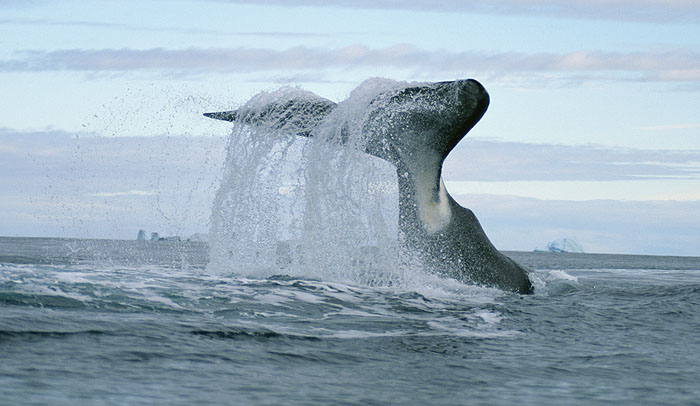This summer, WWF is helping support two expeditions that will take on some of the world’s most difficult waters, to see first-hand the effects of Arctic climate change. One expedition is sailing across the top of Russia, a journey of 6000 nautical miles through the Northeast Passage, while another is attempting a west to east transit of the Northwest Passage, also by sailing boat, a journey of about 7,000 nautical miles.
Tom Arnbom of Sweden was on the ‘Explorer of Sweden’ though the Northeast Passage, as was WWF Arctic Programme Director Neil Hamilton for much of the trip, replaced near the end by WWF polar bear coordinator Geoff York. On the ‘Silent Sound’ Cameron Dueck of the Open Passage Expedition is filing regular stories from the Northwest passage. Come back for photos and stories throughout the summer, and follow the progress of the boats as they follow in the wake of some of history’s most intrepid explorers.
By Geoff York
“Climate change is not something which will happen in the future, it is happening now, most dramatically in the Arctic. The main cause is clear and undisputed. Increased carbon dioxide in the atmosphere due to the burning of fossil fuels is accepted as the main cause of climate change by all scientists save those working for the fossil fuel industry. Polar bears may be some of the earliest victims, but the rest of us are not far behind.” – Steve Sawyer

The Bering Strait, as seen on Google Maps
Our local climate has changed dramatically in the past day. The sea temperature is now above 6 C. We have turned the corner this morning and are now in the Bering Strait, heading south. The one thing we should have seen much more of this trip was summer sea ice, but other than the occasional patch of drift ice encountered, the main pack is far to our north. We are approaching the annual sea ice minimum, generally around mid September, and I will be interested to see if the winds we’ve experienced change the final outcome. The last report I heard anticipated significant loss, but likely not another record year as in 2007.
The village of Uelen sits just north of Cape Dezhnyova, the easternmost point of the Russian mainland. It is 7 AM local time when we sight the village and are surprised when we are hailed on the radio. Someone is up early and alert! We wake up Victor who explains who we are and arranges for a possible visit later in the day. The seas are too rough to land from the north, so we will round the cape and hope for a better anchorage.
At 8 AM the champagne cork flies and the crew assembles on the bow with Ola to celebrate. We are sitting abeam of the Cape and the expedition has now officially transited the Northeast Passage! Cheers and handshakes abound and many photos are taken to document the expedition’s success. It is a perfectly dramatic setting for what continues to be an amazing journey, and it is far from over. Steep cliffs drop to the ocean and seabirds are swirling in all directions. We count four gray whales during our celebration and can see both Diomede Islands from the bow (yes- I truly can see Alaska from my floating house in Russian waters!).
We round the cape and look for a good place to set the hook. A large tanker also sits at anchor nearby and a cargo ship passes us as we head into the bay. As Arctic shipping picks up, the Bering Strait will become a critical passageway and is notorious for fog and very strong currents. This is also a crucial passageway for seabirds, whales, seals, walrus, and polar bear. A shipwreck here could be disastrous and an oil spill would be carried for miles. This serves as another reminder that we need a strong governance framework for the Arctic including reasonable oversight of shipping activities and greatly improved rescue and accident response capabilities.
While Ola and the team have successfully navigated the Passage, we are still miles from Anadyr, where most of the crew will fly home. We are also a very long way from Dutch Harbour, Alaska where I will depart the ship after crossing the Bering Sea. The Bering is one of WWF’s priority ecoregions and home to not only the world’s most productive fisheries, but also Kamchatka, the Pribilof Islands, and Bristol Bay. Our field offices in Alaska and Kamchatka are focused on protecting these important places from some of the very same threats we have in the Arctic: shipping and industrial exploitation.
As Anders, Niklas, and I make our way across the Bering Sea, I will touch on some of these issues. Once we depart Anadyr, the trip will become an open ocean voyage and I will continue to update you on our experiences as we enter the region Vitus Bering described “where the sea breaks its back.” Until then, we have more Russian coast to cover over the next few days, and many more memorable experiences to share!






